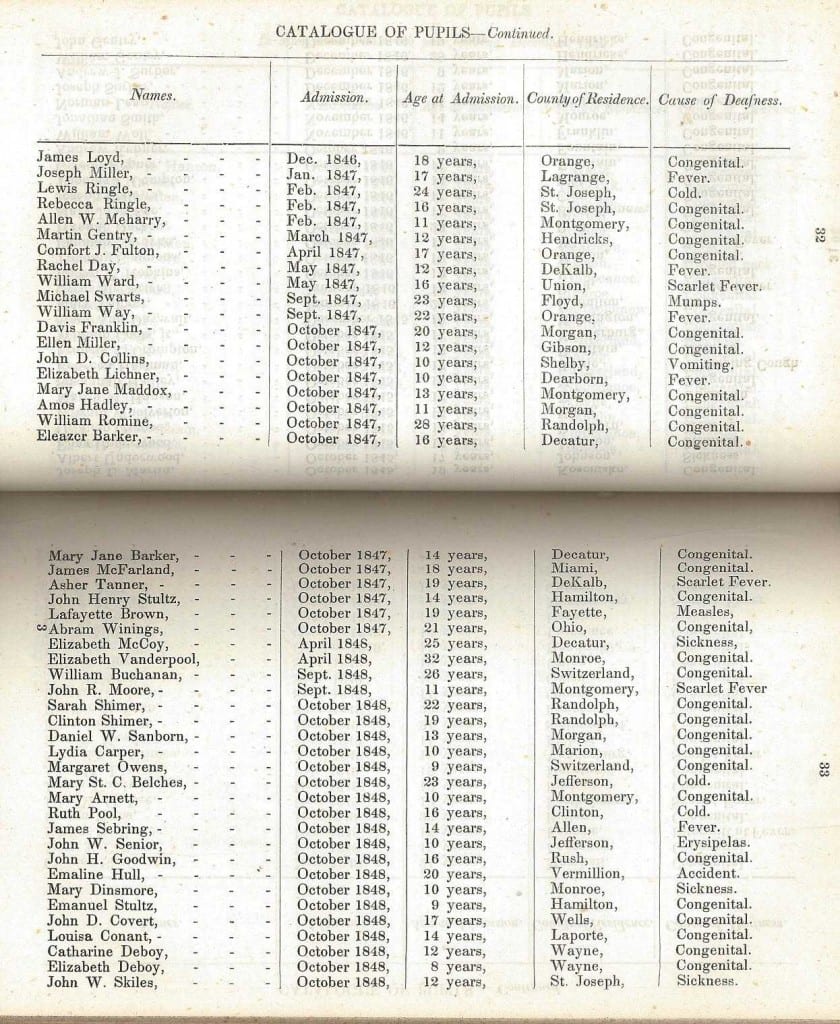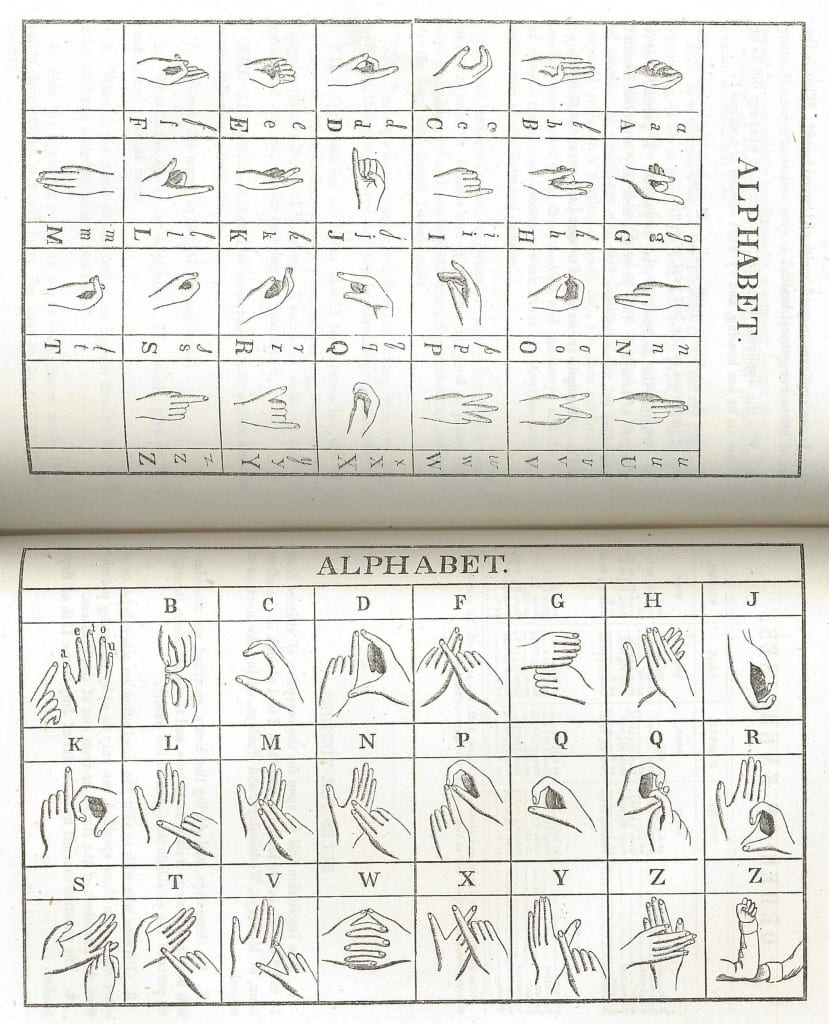Marcus Hill Kerr – a Deaf American Artist & … Animal Trainer (1845-1903)
By H Dominic W Stiles, on 17 May 2019
An American Deaf man of the late 19th century, Marcus Hill Kerr was born in Liberty Township, Jackson, Michigan, in 1845. His father Robert was a farmer with at least eight children, and as the town was settled in 1835, the Kerr family must have been one of the first in the district. When he was three he suffered from ‘brain fever’ and lost his hearing as a result. When he was twelve he was sent to Flint, to the Michigan School for the Deaf, and he graduated from there in 1865 (Gallaher, p.142, from which much of what follows comes, and Obituary). Kerr went on to study at Gallaudet, to what level I cannot say – Gallaher says merely he ‘spent some time’ there.
His artistic talent was evident as a child – for example, he drew ‘an Indian shooting an elephant on a small wooden box’! The article in Representative Deaf Persons of the United States of America seems to have been from interview with Kerr, and we have a few particular details of his early life, such as that he would read newspapers at the local ‘news depot’ but as he could not afford to buy them, he would draw pictures from memory afterwards.
Marcus’s first oil painting was painted when he was thirteen and was of his old shepherd dog. He also made landscapes and portraits, ‘for a living’ before going to Rochester, New York, to study under a ‘celebrated artist’ Professor Adam Springfield.* Before that he had been entirely self-taught. Kerr went on to the artists’ colony in New York we are told, and then travelled to Europe in 1871, including visits to London, Düsseldorf and Paris. The article says he ‘studied’ in these places. Probably that means he was studying under his own steam, and we may wonder how long he was studying with the celebrated Professor. Springfield was a witness to Kerr’s passport application, in September 1872 – was he going abroad then, after getting married, rather than in 1871? That would be an area for further research.
In September 1871, he married a Deaf lady from Jackson, called Adele George (1834-1921), nine years his senior, but who had also been at the Michigan School. His obituary does not mention her, but does say he lived at the corner of Elm street and Main. Adele is herself really interesting, and if you can you should read the article on her by Seitz and Laffrado cited below. She was a poor Deaf woman who found her voice, writing and publishing her life story, A brief narrative of the life of Miss Adele M. George: (being deaf and dumb) in a number of different editions over many years, from 1859, then selling sufficient copies to rescue herself and her mother from homelessness.
Adele married a cousin, Harrison Jewell, and they had three children including a Deaf son who went to the Michigan School but died aged sixteen. They were divorced, and then Adele married Marcus Kerr. The marriage was not successful in the long run, and they had to endure the loss of three children in infancy. Their divorce in 1890 was reported in the newspapers, as Kerr was well known, though Adele (Adell) is described in the city directory for Jackson in 1899 and also in 1902, as ‘Kerr, Adelle (wid Marcus H) bds 736 S Milwaukee’ – in other words she was calling herself a widow before Marcus died (Seitz and Lallrado p.174). Kerr had accused Adele of “extravagance and desertion” (ibid.). we might wonder what blame he carried – he did not wait about, marrying another deaf lady, Mamie E. Nettleton of Indiana, in January 1891.**
Kerr spent his later years in St. Louis, moving there in 1885, painting the ex-mayor Walbridge, as well as a pastel of the Rev. Thomas Hopkins Gallaudet, which was exhibited at the World’s Fair in Chicago in 1893, and was presented to the college. He also painted Helen Keller and Alexander Graham Bell. Do these portraits survive?
The most bizarre thing about Marcus Kerr, is his entry in Peeps into the Deaf World, where we discover that he trained a pug to perform various tricks. It was this picture that got me looking into his life. Whether this was a pastime or perhaps an additional source of income I do not know. I am sure there is more to discover. His end was sad, and a fate shared by many deaf people over the years. He was knocked over when crossing a road on the 10th of April, 1903, by a car he did not of course hear.
Mamie is pretty opaque in the records – at least after a brief search I have not been able to pin her down, neither have I found Kerr on the 1900 census, but I have little time to look. Did their marriage last, or did she die? In his obituary she is not named. That obituary, in the Jackson Citizen, quoting the St. Louis Post and Dispatch, says he had a studio at 3837 Delmar Avenue (see article on Find a Grave in the link below).
 *Someone I have not been able to track down in the brief time available to research this blog in any detail, but have found this romantic Victorian historical painting by him.
*Someone I have not been able to track down in the brief time available to research this blog in any detail, but have found this romantic Victorian historical painting by him.
Gallaher, James E., Representative Deaf Persons of the United States of America, 1898 (2nd ed.) p.142-3
Roe, W.R., Peeps into the Deaf World, 1917 p.290-1
The St. Louis Republic. (St. Louis, Mo.), 11 April 1903. Chronicling America: Historic American Newspapers. Lib. of Congress. <https://chroniclingamerica.loc.gov/lccn/sn84020274/1903-04-11/ed-1/seq-3/>
Seitz, Rush, and Laffrado, Laura, Adele M. George Jewel Kerr (1834–?), Legacy Vol. 30, No. 1, Special Issue: Women Writing Disability (2013), pp. 172-183
US Census returns
Year: 1850; Census Place: Liberty, Jackson, Michigan; Roll: M432_352; Page: 402A; Image: 556
Year: 1880; Census Place: Jackson, Jackson, Michigan; Roll: 585; Page: 424D; Enumeration District: 123
U.S. Special Census on Deaf Family Marriages and Hearing Relatives, 1888-1895
Passport Record – National Archives and Records Administration (NARA); Washington D.C.; Roll #: 187; Volume #: Roll 187 – 01 Aug 1872-30 Sep 1872
Ancestry.com. U.S. City Directories, 1822-1995 [database on-line]
 Close
Close







